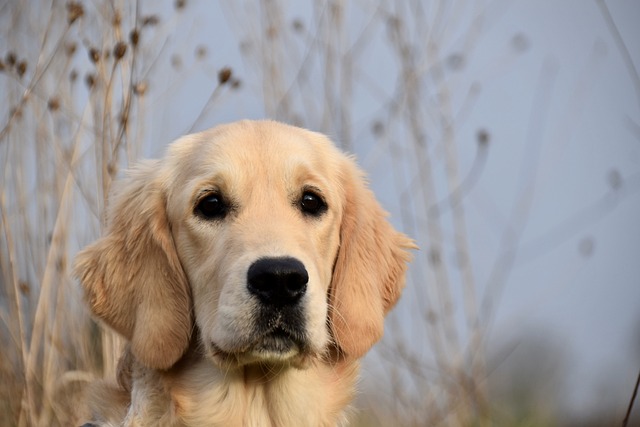
How can I tell if my dog's heatstroke is serious
Let’s be real: It’s a sticky August morning in Los Angeles, and you took your 2-year-old Golden Retriever, Max, for a walk a little later than usual
That enthusiastic Golden Retriever grin comes with a catch—those pearly whites need serious TLC. Unlike casual brushing for some breeds, Goldens’ hearty appetites and tendency to chew everything from sticks to squeaky toys mean their dental health demands consistent attention. In the UK, the Animal Welfare Act explicitly states that pets require “appropriate veterinary care,” which includes maintaining oral hygiene to prevent painful tooth decay and gum disease. Navigating the right brushing routine involves understanding your dog’s unique needs, local regulations, and a dash of training finesse.
Golden Retrievers’ broad jaws and strong teeth make them prone to plaque buildup. A vet in Colorado once treated a 5-year-old Golden whose owner skipped regular brushing. By the time they visited, tartar had hardened, requiring an anesthesia - assisted dental cleaning that cost over $800. This isn’t an isolated case; studies show that 80% of dogs over three years old develop periodontal disease, and Goldens, with their love for chewing, face an even higher risk. Their affectionate nature also means they’re more likely to give slobbery kisses, making clean teeth essential for both their health and your comfort.
 So, how often should you brush? Aim for daily brushing if possible. Just like humans, a once-a-day scrub removes food particles and prevents bacteria from turning into stubborn tartar. But if daily seems daunting, aim for at least 3 - 4 times a week. A New York City pet owner shared her secret: she brushes her Golden’s teeth while watching TV, turning it into a bonding ritual. Use a soft-bristled toothbrush specifically designed for dogs—human toothbrushes can be too harsh on their sensitive gums. And never use human toothpaste; the fluoride and additives can upset your dog’s stomach. Dog-friendly toothpastes come in flavors like chicken or beef, making the experience more appealing.
So, how often should you brush? Aim for daily brushing if possible. Just like humans, a once-a-day scrub removes food particles and prevents bacteria from turning into stubborn tartar. But if daily seems daunting, aim for at least 3 - 4 times a week. A New York City pet owner shared her secret: she brushes her Golden’s teeth while watching TV, turning it into a bonding ritual. Use a soft-bristled toothbrush specifically designed for dogs—human toothbrushes can be too harsh on their sensitive gums. And never use human toothpaste; the fluoride and additives can upset your dog’s stomach. Dog-friendly toothpastes come in flavors like chicken or beef, making the experience more appealing.
Training your Golden to tolerate tooth brushing starts with patience. Begin by gently touching their muzzle and lips, rewarding calm behavior with small treats. Gradually progress to opening their mouth slightly and rubbing a finger along their teeth. Once they’re comfortable, introduce the toothbrush. My neighbor’s rescue Golden, initially terrified of anything near his mouth, learned to sit patiently for brushing after two weeks of positive reinforcement. Remember, forcing the issue only creates fear; make it a game, and your dog will associate brushing with fun.
In the US, some pet insurance companies offer discounts for owners who prove regular dental care, highlighting the importance insurers place on oral hygiene. And in countries like Australia, where strict regulations govern pet care, neglecting dental health can lead to fines or even legal action in extreme cases. Beyond brushing, incorporate dental chews and toys into your Golden’s routine. Look for products approved by the Veterinary Oral Health Council (VOHC) to ensure effectiveness. A rawhide alternative like antlers can satisfy their chewing urge while scraping away plaque, but always supervise playtime to prevent choking hazards.
Cultural factors also play a role. In suburban America, where Goldens often have large yards to roam, owners might need to rinse their dog’s mouth after outdoor play to remove dirt and debris. In European cities, apartment-dwelling owners can use puzzle toys filled with dental treats to keep their dogs occupied and their teeth clean. By blending regular brushing, smart treat choices, and a dose of positive training, you’ll keep that Golden Retriever smile bright and healthy for years to come.

Let’s be real: It’s a sticky August morning in Los Angeles, and you took your 2-year-old Golden Retriever, Max, for a walk a little later than usual

You're enjoying a summer afternoon at the park when you notice your dog has stopped panting and appears disoriented - their gums are bright red

Let’s paint the picture: You’re in your Denver apartment, watching your 4-year-old Boston Terrier, Ruby, plop down mid-play session with her favorite toy

Many dog owners notice their pets nails seem shorter after regular walks,but how much does this daily activity actually help?The answer depends on where you walk—concrete sidewalks or asphalt streets gently file nails as a dog's paws hit the ground

Most dog owners notice their pup scooting across the carpet at some point, but few connect it to impacted anal glands. These small sacs near a dog’s rectum secrete a scent for marking territory

Most vets agree that regular dog teeth cleaning is key to avoiding painful dental issues later. For healthy adult dogs, a professional cleaning at the vet’s office every 12 to 18 months usually works well.